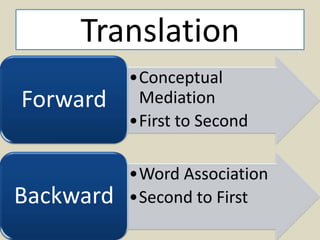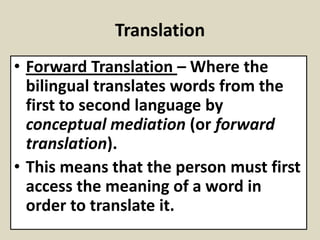Bilingualism refers to proficiency in two or more languages. About half the world's population is bilingual. Children can become bilingual by acquiring two languages simultaneously from birth or learning a second language after mastering the first. Bilingualism exists on a spectrum from balanced proficiency in both languages to dominance in one. Being bilingual provides cognitive advantages such as better concept formation and analogical reasoning skills.
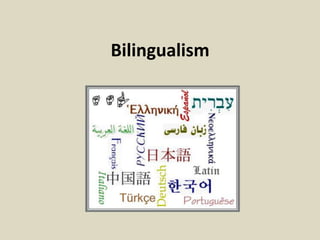
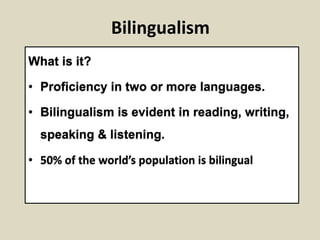

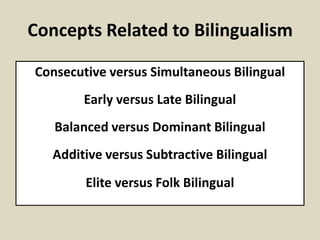
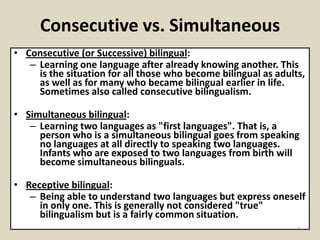
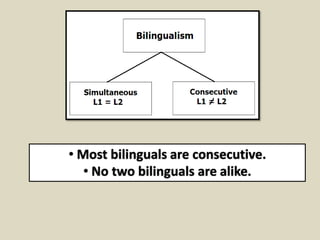
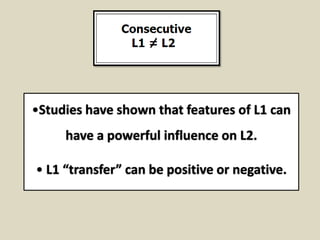

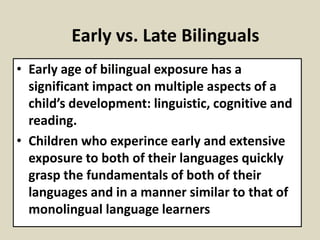

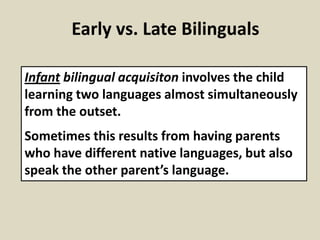
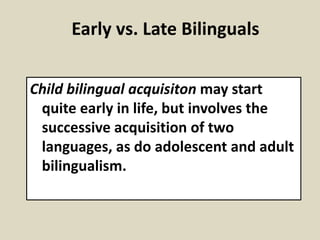

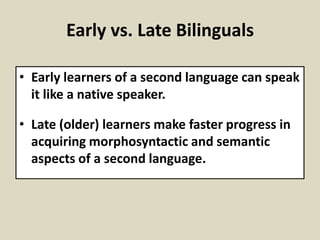

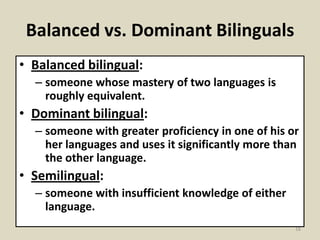



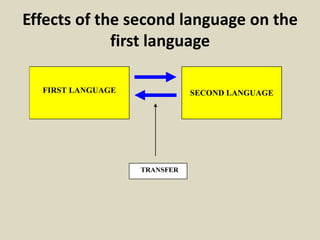

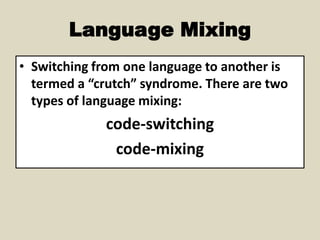
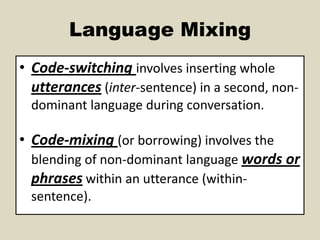
![Language Mixing
• Using this definition, and presuming that
English is the dominant language in the
following utterances:
• ‘Is this what we are having for dinner
today? Sira naba tuktok mo? [Are you
crazy?] It’s not Saturday and I don’t eat
tuyo [smoked/dried fish] except on
Saturdays. It just doesn’t seem right!’](https://image.slidesharecdn.com/lecture23-131127061617-phpapp02/85/Bilingualism-24-320.jpg)


